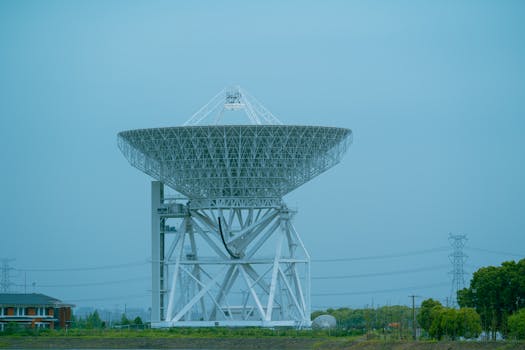
The Future is Now: Exploring the Cutting-Edge Innovations in Satellite Telecommunications
Satellite Telecommunications is experiencing a significant transformation, driven by cutting-edge innovations that are revolutionizing the industry. The future of telecommunications is now, and it’s being shaped by advancements in satellite technology, antenna design, and constellation development. As we explore the latest trends and breakthroughs, it becomes clear that the future of satellite telecommunications is brighter than ever.
The demand for high-speed, low-latency connectivity is on the rise, and satellite telecommunications is poised to meet this demand. With the advent of high-throughput satellites (HTS), satellite constellations, and advanced antenna technologies, the industry is experiencing a new era of growth and innovation. These advancements are enabling faster, more reliable, and more affordable connectivity, making it possible for people and organizations around the world to access high-quality telecommunications services.
High-Throughput Satellites: A New Era of Connectivity

High-throughput satellites are a game-changer for the satellite telecommunications industry. These satellites are designed to provide high-speed, high-capacity connectivity, making them ideal for applications such as broadband internet, video streaming, and telecommunications. HTS satellites use advanced technologies like spot beams and frequency reuse to increase capacity and reduce latency, enabling faster and more reliable connectivity. With HTS, satellite telecommunications providers can offer speeds of up to 100 Gbps, making it possible to support a wide range of applications, from consumer broadband to enterprise networking.
Companies like Intelsat, SES, and ViaSat are leading the charge in HTS development, with satellites like Intelsat’s EpicNG and SES’s O3b constellation providing high-throughput connectivity to customers around the world. These satellites are being used to support a range of applications, from broadband internet and video streaming to telecommunications and enterprise networking.
Satellite Constellations: A New Paradigm for Satellite Telecommunications

Satellite constellations are another key innovation driving the future of satellite telecommunications. These constellations consist of multiple satellites working together to provide global coverage and connectivity. By using multiple satellites, constellation operators can provide seamless, high-speed connectivity to customers around the world, regardless of their location. Satellite constellations are being developed by companies like OneWeb, SpaceX, and Amazon’s Kuiper Systems, with the goal of providing global, high-speed connectivity to underserved and unserved communities.
Satellite constellations have the potential to revolutionize the satellite telecommunications industry, enabling new applications and services that were previously impossible. With constellations, satellite telecommunications providers can offer global coverage, high-speed connectivity, and low latency, making it possible to support a wide range of applications, from consumer broadband to enterprise networking and IoT connectivity.
Advanced Antenna Technologies: Enabling the Future of Satellite Telecommunications

Advanced antenna technologies are playing a critical role in the development of satellite telecommunications. New antenna designs and materials are enabling the creation of smaller, lighter, and more efficient antennas, making it possible to support high-throughput satellites and satellite constellations. These antennas are being used to support a range of applications, from consumer broadband to enterprise networking and telecommunications.
Companies like Kymeta and Phasor are developing advanced antenna technologies, including flat-panel antennas and phased arrays. These antennas are being used to support high-throughput satellites and satellite constellations, enabling faster, more reliable, and more affordable connectivity. With advanced antenna technologies, satellite telecommunications providers can offer higher speeds, lower latency, and greater reliability, making it possible to support a wide range of applications and services.
Conclusion

The future of satellite telecommunications is now, and it’s being shaped by cutting-edge innovations like high-throughput satellites, satellite constellations, and advanced antenna technologies. These advancements are enabling faster, more reliable, and more affordable connectivity, making it possible for people and organizations around the world to access high-quality telecommunications services. As the industry continues to evolve, we can expect to see even more innovative solutions and applications emerge, driving growth and transformation in the satellite telecommunications industry.
See more:



